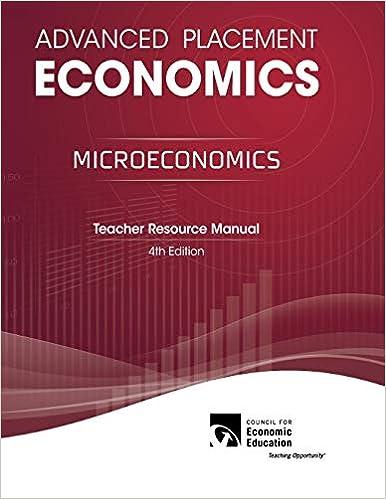Question
The following problem is based on the idea of a Malthusian trap. Thomas Malthus, an 18th century British cleric and scholar, argued that as population
The following problem is based on the idea of a Malthusian trap. Thomas Malthus, an 18th century British cleric and scholar, argued that as population increases, the limited amount of natural resources will lead societies into a trap of gradually decreasing standard of living, thus negating the effects of any technological progress. We can study this idea using the Solow model framework.
Consider a modified version of the Solow growth model where the aggregate production function in period t is
Yt = F(Kt,Lt,Z) = (Kt^)(Lt^)(Z^(1))
Z represents land and is available in fixed inelastic supply given by nature. Assume that + < 1, capital depreciates at the rare , the exogenous savings rate is s, and the population growth rate is n. (i.e. everything else is the same as the basic Solow Model with population growth)
(a) Show that the production function exhibits constant returns to scale in (K,L,Z), but decreasing returns to scale in (K, L) only.
We are going to transform the model in per worker form. Let yt = Yt/Lt , kt = Kt/Lt , zt = Z/Lt , it = It/Lt , and
ct = Ct/Lt
(b) Note that the available land Z is fixed, but the amount of land per worker is not. What happens to land per worker zt over time? What is the growth rate of zt?
(c) Write down the equations for output, investment, consumption, and the capital accumulation equation. Then transform all equations in per-worker form (hint: all 5 variables - capital, output, consumption, investment, and land must be in per-worker form).
(d) Use the capital accumulation equation you obtained in (c) to discuss how capital per worker kt will evolve over time. Draw the investment and depreciation (break-even investment) curves. What happens to the investment curve over time? Is there a steady-state?
(e) What happens to capital, output, consumption, investment, and land per worker over time? Find k,y,c,i,and z as t.
(f) Derive an expression for the real wage as a function of capital per worker and land per worker only. What happens to the real wage as t .
(g) Do answers from parts (e-f) confirm or reject the idea of a Malthusian trap? Briefly discuss your results.
Now suppose that advances in agriculture and technology allow us to use land, labor, and capital more efficiently. In the most general case we can measure those changes in technology by total factor productivity. Let At be total factor productivity. The production function becomes:
Yt = F(Kt,Lt,Z) = (At)(Kt^)(Lt^)(Z^(1))
(h) What must the growth rate of total factor productivity At/At be equal to in order to negate the effects of the Malthusian trap (i.e. in order to have a standard-looking Solow steady-state with k > 0)?
Hint: Recall that (xt^a)/xt^a = (a)(xt/xt) - the growth rate of a variable raised to a power is equal to the power times the growth rate of the variable
(i) Given your answer to (h), is the Malthusian trap something we should worry about in the real world?
Step by Step Solution
There are 3 Steps involved in it
Step: 1

Get Instant Access to Expert-Tailored Solutions
See step-by-step solutions with expert insights and AI powered tools for academic success
Step: 2

Step: 3

Ace Your Homework with AI
Get the answers you need in no time with our AI-driven, step-by-step assistance
Get Started


